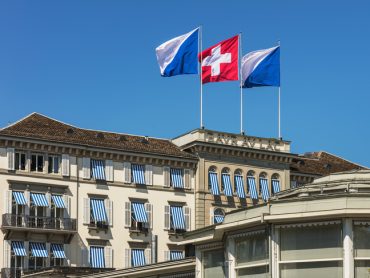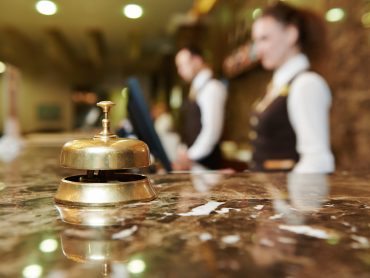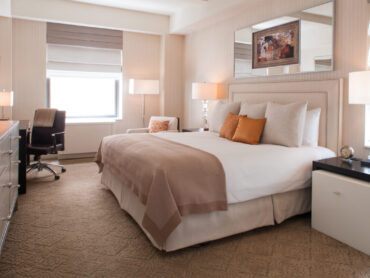In Search of Hotel Excellence: Hotel Berlin, Berlin
A recent trip to Berlin saw me stay at Hotel Berlin, Berlin (no this is not a typographical error, the property’s name is Hotel Berlin, Berlin located in Berlin… that’s an impressive alliteration). And while I have been to Germany many times, it was my first trip to the capital city.
As a relatively frequent traveler to Europe (typically 3-4 times per year), my travels have generally taken me to London, Paris or when on holidays, to more Mediterranean destinations. Berlin, somehow, never made it to my radar. So, before discussing the property, let me give you a brief overview of the city.
If you are a baby boomer, perhaps your thoughts of Berlin are to President Kennedy and the Berlin Airlift. Or, if you’re younger your memory might move to the scenes of the wall being dismantled, remarkably now some 20 years ago. Neither of these images is appropriate: Berlin is alive, rejuvenated and clearly bucking the malaise experienced by most North American (and probably non-German European cities). The architecture is a mixture of refurbished and new; the Tierengarten in the center of the city rivals New York’s Central Park and the traffic, surprisingly, is not as bad as London, Paris, or other capital cities.
My daughter studied fine art in London, and captivated me with the stories of contemporary art seemingly taking over Berlin. True there were numerous private art galleries, but moreover, the museums and public galleries were equally impressive. On a Sunday afternoon, it seemed as if the entire world was out on their bicycles, or walking with kids in strollers. The shops were crowded with buyers, not just gawkers. The food was excellent; the wines unique and of course, the beer exceeded any expectation. As you can tell, I am quite an enthusiastic supporter of travel to this city.
Hotel Berlin, Berlin is located in the western side of the city, just south of the Tiergarten (park) and a block away from one of the main shopping streets. Its location just outside of the downtown core makes it well suited for both leisure and business. In my four-night stay on property, before as well as through a weekend, the guest mix was about equal. It was indeed refreshing to see convention visitors intermingled with back packers, tour groups and FIT… all seemingly content with their stay.
The property’s 700 rooms are laid out in a five-story hollow square pattern with a center corridor spine breaking the square in two. Meeting rooms on the main floor are creatively identified through geographic city names, clustered into areas defined as continents. Break out rooms are identified with island names and located throughout the property. This unique approach creates a positive atmosphere amongst business customers.
Our meeting was in the Washington Room. One minor and unusual complaint: the rooms had so much sunlight that it partially drowning out visuals on my PowerPoint presentation. Compare that to most environments that we see in hotels these days, where meeting rooms tend to be so drab, boring and dreary that the audience tends to be half asleep before the presentation even begins! (Key learning here for your meeting rooms: a bright room promotes more lively delegate communications.) Free WiFi is available, with excellent bandwidth, everywhere on property.
I had a luxury suite, which had several features that were both quite unique and impressive. Setting this aside, I had an opportunity to inspect some of the core-style guest rooms. The smallest room, which might be considered a “petit, “ was a model of efficiency, and offers property management the ability to deliver a competitive market price point. (Another piece of key learning: double occupancy for meeting delegates is less of a selling point than having right-priced single accommodations.)
As the rooms increased in size, so too did the bed size, number of chairs, added furnishings, etc. All rooms utilized modern graphics on their walls, themed to other property elements, to create a high degree of both consistency and memorability.
Food and beverage revolved around the restaurant named Julius. Daily buffet breakfasts are included with your stay, and were in keeping with the tradition of providing a multitude of items to allow for different selections daily. The restaurant seems to expand somewhat caterpillar-like, as additional linear sections are added on as necessary to meet seating requirements. We enjoyed one light lunch in the restaurant, which was efficient, tasty and well-prepared. Our welcome night dinner was sensational, with various white wines demonstrating the efficacy and craftsmanship of local winemakers.
It occurred to me that well-executed food and beverage programs are a vital selling point to group activity. This does not mean gourmet offerings, but rather easy-to-eat, buffet style programs are better than sit-down, serviced meals.
I asked the property’s managing director, Cornelia Kausch, to describe some of the challenges she is facing with the business and her approach to maintaining the property’s success. Her response, “Like our namesake city, Hotel Berlin, Berlin reflects the new values of responsive accommodations: efficient with a look to our past, but with a keen eye to the technologically-enhanced future. Our growth will come from the management of our channel mix and further development of our own brand.com business, as we continue to evolve the characteristics that differentiate us.”
When asked about specific business drivers, Ms. Kausch responded, “Our FIT business will continue to be driven by the buoyant local tourism marketplace. Our MICE programs respect the need for productive, cost-efficient meetings, which are well-served by our location, layout, critical mass, venue style, value-driven price points and commitment to this sector.”
After my brief stay in Hotel Berlin, Berlin, I am convinced that Ms Kausch and team are on the right track to deliver on her business goals.
(Published in HotelsMag.com on July 11, 2012)



